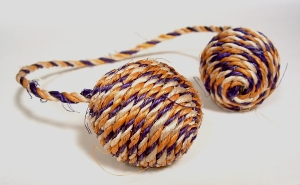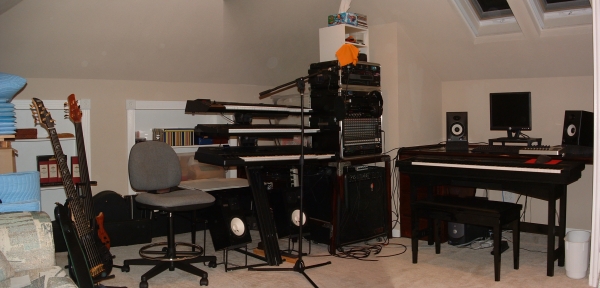Track 5: Body Of Mine
Thom's songwriting journal entry for Body Of Mine
Virtual Ensemble
- A.V.: acoustic guitar, lead vocal
- B.B.: bass
- K.B.: electric piano
- D.P.: drums
- Thom Barker: acoustic guitar, lead vocal
- Ken Barker: fretted bass (BEADGC), electric piano, drum programming
This was probably the most difficult song to match the timing to the existing acoustic guitar and vocal tracks. There are 49 tempo changes in the sequencer file, and it's still not quite locked. But I'm not too bothered by the looseness -- it still seems to have some feel.
I'm really happy with the way the noodling on the piano turned out. Its movement, ornaments and chromatic passing notes here and there add real spice, I think.
There's a double quote of Take the A Train at 3:09 under the lyrics "Underneath my feet the rumble of the A Street Train"*. In the first quote the bass echoes the main A Train theme ("You... must take the A Train"), but in root position of the I-minor of this song, as opposed to the second inversion position of I-major in A Train. At the same time, the second quote has the piano playing the standard first bar comping chords of A Train (third inversion of the VIm7 in A Train, which is Im7 here) but with a rhythm that fits here. Sounds kind of like a train horn, too.
*Of course, after working on the album for five years, I finally realized that the real lyric is "the 8th Street train", not "A Street". Haha. Oh well. Extra clever to quote A Train under "8th Street Train", then.
The bass and drums are pretty much rhythmically locked throughout this track. But as they play the same rhythmic figures, the piano has most of its rhythmic interest in the spaces the bass and drums leave.
There's a twist on the "delayed chorus accent", here -- an "anticipated chorus accent". The main chorus accent comes on the "and" of four of the bar preceding the first chorus group bar (and other chorus bars, too, with lesser emphasis).
Next: 2x: 6. Don't Try






